Spaceflight, Astronautics, and Astronomy
GI Joe Astronaut
As humanity ventures further into space, surely Hasbro could revive this toy.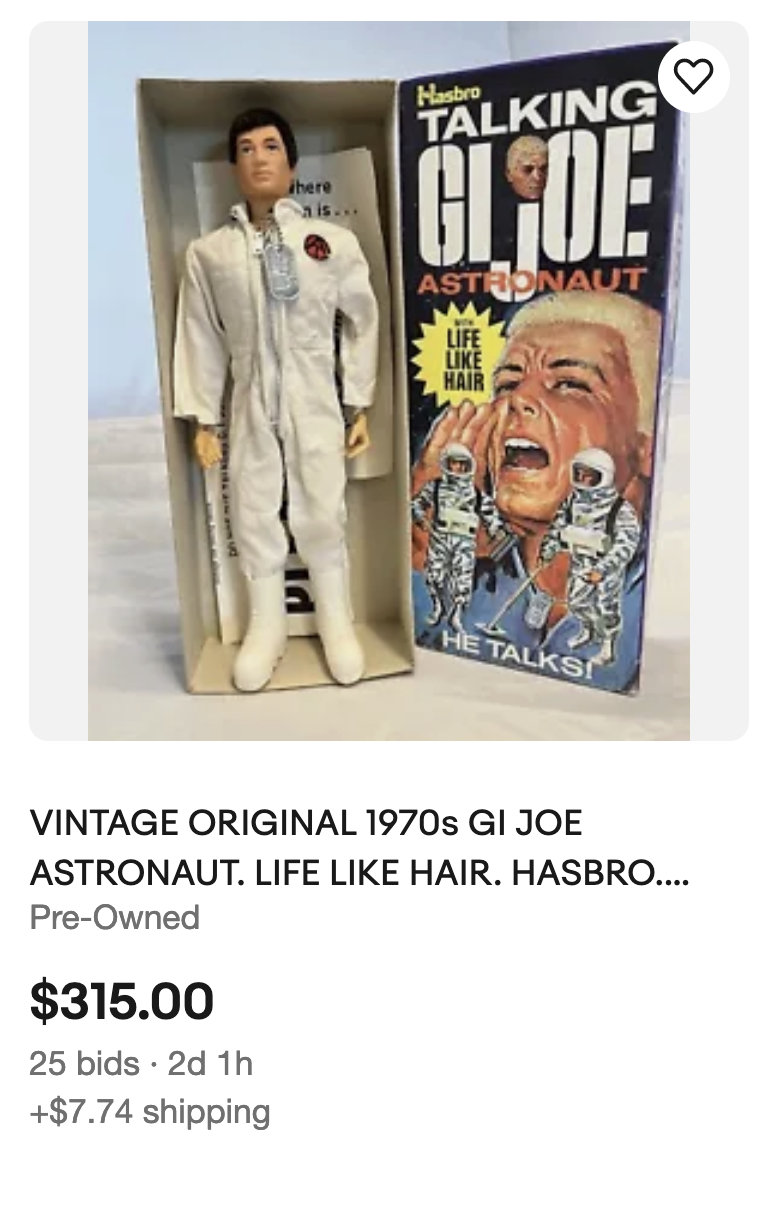
Posted By: Paul - Sat Jul 01, 2023 -
Comments (1)
Category: Spaceflight, Astronautics, and Astronomy, Toys, Dolls and Stuffed Animals, 1960s
Glenda Lawrence, “America’s First Space Housekeeper”
Now that NASA has selected a new crew for the Moon mission, I hope they have not neglected to fill this role.
Glenda Lawrence America's First Space Housekeeper. She Will Be Preparing Food For The Apollo 11 Astronauts Armstrong Aldrin And Collins Whilst They Are In Quarantine.
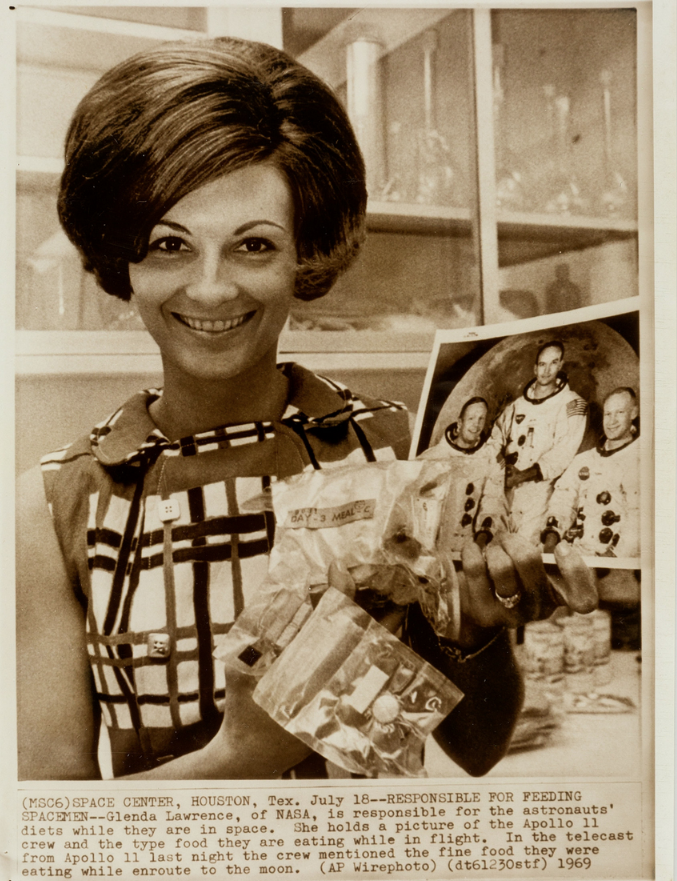
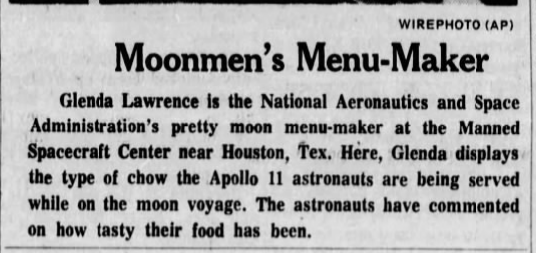
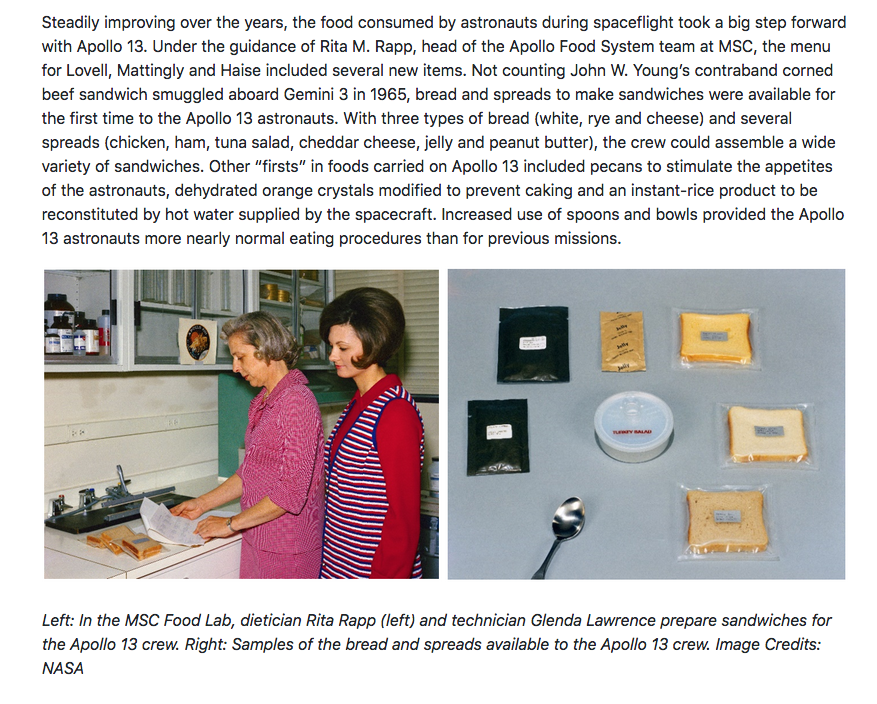
Posted By: Paul - Tue Apr 04, 2023 -
Comments (1)
Category: Domestic, Food, Spaceflight, Astronautics, and Astronomy, 1960s
The taste of food in dark isolation
Beatrice Finkelstein, a nutrition researcher at Wright-Patterson Air Force Base, conducted a series of "dark-isolation studies" during the 1950s. Subjects were placed for periods of 6 to 72 hours in a totally dark, sound proof chamber furnished with a bed, chair, refrigerator, and chemical toilet.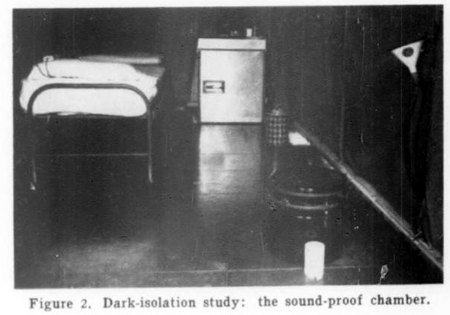
The purpose of this was to find out how astronauts might react to being confined in a small, dark space for a prolonged period of time. And in particular how their responses to food might change.
Some of her results:
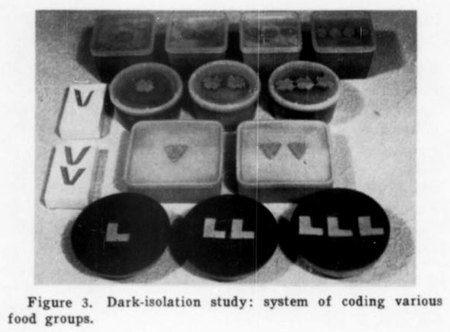
But the stranger result was how the lack of visual input completely changed the flavor of the food:
More info: "Feeding crews in air vehicles of the future"
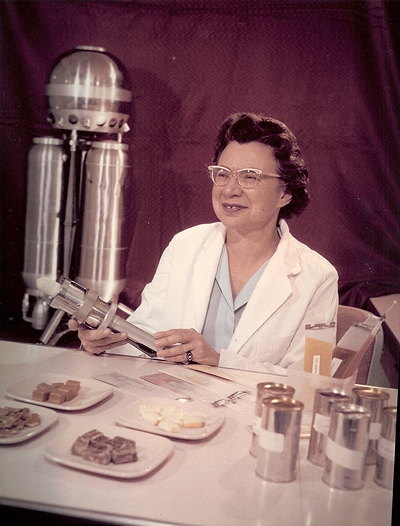
Beatrice Finkelstein (source)
Posted By: Alex - Mon Jan 30, 2023 -
Comments (4)
Category: Food, Spaceflight, Astronautics, and Astronomy, Experiments, Psychology
Follies of the Madmen #547
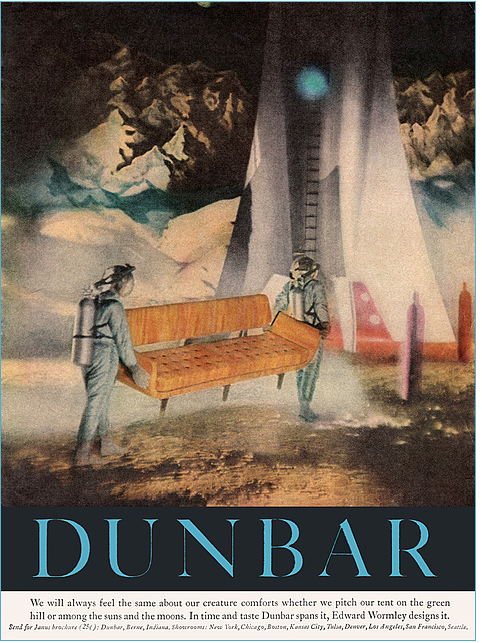
Posted By: Paul - Thu Nov 17, 2022 -
Comments (2)
Category: Domestic, Spaceflight, Astronautics, and Astronomy, Advertising, 1950s
Using an atomic water cannon to change the earth’s orbit
Back in the early 1970s, engineer William Peterson proposed builing a gigantic, atomic-powered water cannon in the Mojave Desert and blasting ocean water out of it. He claimed this would not only create rain to water the desert, but would also change earth's orbit, in a beneficial way. Eventually, he said, we could even use the cannon to move the earth to a new solar system!I've got two questions: 1) Would salt water shot up into the atmosphere come back down as fresh water? and 2) How big would you have to make something like this to actually move the earth?

Logan Herald-Journal - Nov 23, 1971
Text below from a Nov 1971 UPI article:
By Robert E. Sweet
SEATTLE (UPI) — William E. Peterson wants to erect what amounts to a giant atomic water pistol in the Mojave Desert, shoot it off and change the orbit of the earth.
Or, as Peterson himself once put it in an edition of a local Rotary Club bulletin which he edits: "Some weirdo hereabouts is campaigning for a project to fly the earth."
Peterson is a 40-year-old structural engineer who works mainly on dams and bridges. He has a sense of humor and can understand why some people might think he's a crackpot. But he is dead serious about his "earth sailing" project," which he has tried to sell to everyone from President Nixon to the Sierra Club to private foundations.
PLAN DETAILED
Peterson's plan is to build a nuclear cannon, a mile in diameter at the base, tapering off to a narrow nozzle on top. With an atomic blast that he estimates would be equal to about one million tons of TNT he would force a piston mechanism to shoot sea water out the top of the cannon at terrific speed.
He figures about 10 per cent of the water vapor would escape earth's gravity and the spray would nudge the planet's orbit in the same way jets propel a spacecraft.
The water that remained in the atmosphere, Peterson said in an interview, would act like a "giant sprinkler system" and create rain to water the Mojave Desert.
CITES PREDICTIONS
A new orbit would improve the world's climate, ease pollution problems and "put some life into Death Valley," he said.
"Some reputable scientists say we're in for another ice age in the year 2000," Peterson said, in an interview, noting that others predict all sorts of ecological disasters on the horizon.
"So some day — and maybe not too far in the future — we're going to have to know how to control the orbit to maintain at least the quality of life we know now.
"If we can't do it this way sailing "Our Great Ship Earth," how are we going to do it?"
Peterson said other potential benefits of his proposal include: — Turning the globe into a giant spacecraft and flying it to another sun when our sun burns out, which scientists estimate will be in about 5 billion years.
— Applying the same technology to other planets to bring them closer to the sun for more living space for earthlings.
— Replacing dams with sea water cannons for the sake of electrical power.
— Desalinating sea water.
EASE NATIONALISM
— Easing the excesses of nationalism by fostering a sense of international cooperation in working on the project.
Peterson said the cannon would not necessarily have to be used to alter the earth's orbit. A smaller blast of water would be just a rainmaker and the water that did not leave the structure could drive power pistons to supply electric energy. Or, a nozzle at the top could be directed in such a way as to squelch forest fires.
His plan has been a personal project with Peterson for 13 years, but only in the last few years has he begun promoting it. Among those to whom he has divulged his plan are: President Nixon, the National Aeronautics and Space Administration (NASA), the U.S. Department of Commerce, the Atomic Energy Commission, the Sierra Club, Sen. Henry Jackson, D-Wash., Washington Gov. Dan Evans, and a few private foundations.
REJECTED BY NASA
NASA rejected the plan because its political and ecological implications were beyond the scope of the agency. H. Dale Grubb, NASA's assistant administator for legislative affairs, wrote Peterson:
"It would be presumptuous and inappropriate for one nation or an agency of one nation to speculate on the accomplishment of such a project."
Brock Evans, a spokesman for the conservation-dedicated Sierra Club, replied: "Death Valley, as you know, is a national monument at the present time. Our viewpoint is that we don't always need to make the desert bloom."
Donald F. Moore, an assistant administrator of the U.S. Department of Commerce, Environmental and Science Services Administration, wrote Peterson:
"The President has asked me to review the proposal ... and give you my comments.
"Your idea of changing the orbit of the earth as a means of controlling climate and distribution of rainfall is most intriguing and certainly represents highly creative thinking on your part.
ELASTIC MEDIUM
"Experience has shown, however, that the atmosphere is a very elastic medium, and thus instead of blowing out into space like the exhaust from a rocket, it absorbs the energy and momentum from a nuclear blast and eventually returns it to the earth so that no actual motion of the earth takes place."
Peterson answered these doubts saying: "actually it would be impossible to draw this conclusion since no one has thought of the type of device I have proposed."
He believes his proposal "warrants a feasibility study," even if admittedly it is a "real futuristic idea."
"I don't feel the (federal officials) gave it a fair shake. They just discounted the ideas and did not by any means prove they wouldn't work."
Peterson said he is gaining support locally and would attempt to win voter approval by going from state to state, campaigning.
And, he added, at least his children are convinced the plan would work — they call him "Earth Pilot No. 1."
Posted By: Alex - Wed Nov 09, 2022 -
Comments (4)
Category: Really Bad Ideas, Spaceflight, Astronautics, and Astronomy, Environmentalism and Ecology, 1970s
Space Boots
Released by Ideal Toy Corp. in 1969:"space boots of adjustable molded air cushions so that the child can experience the floating feeling of walking on the moon."

source: awmok.com
Posted By: Alex - Fri Sep 09, 2022 -
Comments (3)
Category: Spaceflight, Astronautics, and Astronomy, Toys, Shoes
A Brief History of the Extraterrestrial Real Estate Market
Note: I originally wrote this article for about.com, which has since ceased to exist. I recently came across it while going through my files. So I decided to repost it here.In 2013, Maria Angeles Duran began selling plots of land on eBay. That, in itself, wasn't unusual. However, the land she was selling was located on the sun. She offered square-meter plots for the price of 1 euro each. By 2015, she had over 600 buyers, but then eBay pulled the plug on her, saying her auctions violated its "intangible goods" policy.
Further complicating Duran's business plan was the fact that she was in no way a pioneer of solar real estate sales. Long before she came along, numerous other people had already staked a claim to the sun. In fact, for over 75 years there's been a booming market in real estate located throughout the entire universe, with the result that by now every corner of the cosmos has been claimed by multiple would-be owners.
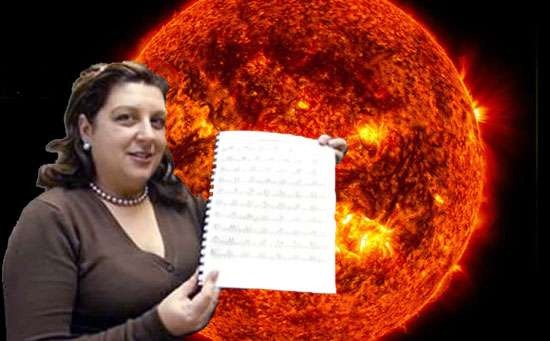
Hot Property: Maria Angeles Duran wants to sell you land on the sun
The First Owner
If priority in this matter means anything (and it probably doesn't) then the entire universe, except for the Earth, is owned by Arthur Dean Lindsay and his descendants, since Lindsay appears to be the first guy who had the idea of laying claim to outer space. In 1937, he filed a deed at the Irwin County Courthouse in Ocilla, Georgia, declaring his ownership of "all of the property known as planets, islands-of-space or other matter." When he informed the press of this, he became widely known as the "man who owns the universe." However, these vast holdings didn't help his finances much. In 1937, it was reported that he was bankrupt.
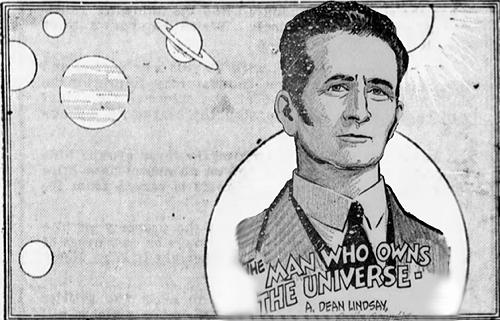
Arthur Dean Lindsay — the man who owned the universe
Homesteading the Moon
In 1948, William Honhold and Robert Eaton of Sewickley, Pennsylvania got the idea of writing to the Bureau of Land Management to request "all rights and privileges to the moon" under the federal homestead act. Interior Secretary Krug actually took the time to respond, saying, "Sovereignty of the United States has never been established over the moon; consequently, land areas, if any, of that planet cannot at this time be regarded as subject to claims or applications under the federal public land laws." Honhold and Eaton planned an appeal to the United Nations.
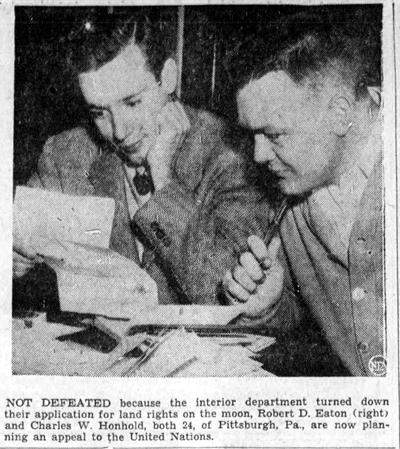
Idaho Falls Post-Register - Apr 21, 1948
More in extended >>
Posted By: Alex - Fri Sep 02, 2022 -
Comments (6)
Category: Real Estate, Scams, Cons, Rip-offs, and General Larceny, Spaceflight, Astronautics, and Astronomy
Moving the Solar System
In the late 1960s, Caltech astronomer Fritz Zwicky proposed a novel method of space travel. Instead of using spaceships to go to neighboring stars, he imagined moving the entire solar system.His idea was that if we could make one side of the sun release more energy than the other, then we could direct the course of its motion. We could steer it towards whatever destination we wanted, with the Earth in tow. He calculated that we could reach Alpha Centauri in 2500 years.
Details can be found in his 1969 book Discovery, Invention, Research Through the Morphological Approach:
For the purpose of traveling to the nearest stars, Alpha Centauri for instance, at a distance of four light years, rockets do not suffice. A very much more exciting possibility offers itself, however: We remain on the Earth and travel with it as the space vehicle, either alone or with the whole solar system towards our goal. During this journey we may enjoy and use the light from the Sun as always, or if we wish to leave it behind, we can keep warm and provide all of the necessary small and large-scale illumination through the proper use of nuclear fusion energy. Traveling at a speed of 500 km/sec through space, relative to the surrounding stars, we might reach the neighborhood of Alpha Centauri in about 2,500 years.
All of this will become possible once we have mastered nuclear fusion ignition of common materials on the Earth and on the Sun. Physicists in many countries have been attempting during the past fifteen years to induce nuclear fusion reactions in extremely concentrated and high-energy ionic plasmas, without making any use of the release of nuclear fission energy from uranium as it is being used in H-bombs.
Even if these efforts should be successful they would not provide us with any readily usable means for the acceleration of the Sun or of the Earth to velocities of the order of 500 km/sec. I have therefore suggested another approach striving to produce small solid particles with velocities of up to 1,000 km/sec. It is not possible here to go into any details of how this is going to be done. I emphasize only that no fundamental difficulties stand in the way. Particles impacting on dense matter with velocities of the order of 1,000 km/sec will generate the desired temperatures of hundreds of millions of degrees, at which all light elements will be ignited to nuclear fusion reactions.
Launching ultrafast particles against the Sun, local regions on it could be ignited to nuclear fusion. As a consequence of the tremendous release of energy by such reactions, matter would be ejected with velocities of the order of 50,000 km/sec, while the resulting forces of reaction would propel the Sun in the opposite direction. If such processes were applied for a long time, the Sun could eventually be accelerated to the desired velocity with a sacrifice of only a small per cent of its total mass.
Since the planets are held in rein by the Sun's gravitational field, they and the Earth would be carried along on the distant journey. In principle the process and propulsion described could be applied to the Earth alone, which then would detach itself from the solar system and start out on its solitary voyage to the nearest stars.
One of the few analyses of Zwicky's idea that I could find online is at dynamical-systems.org. The author, Oliver Knill, quickly concludes that the idea is completely nuts:
But even if Zwicky's idea could be made to work, what would happen once our solar system reached the vicinity of Alpha Centauri? How close could our sun approach Alpha Centauri before the two systems became gravitationally bound to each other? What kind of chaos would that wreak on the planets and asteroids within our solar system?
Posted By: Alex - Tue Aug 30, 2022 -
Comments (3)
Category: Spaceflight, Astronautics, and Astronomy
Astrochickens
Theoretical physicist Freeman Dyson envisioned our Solar System being explored by "Astrochickens." As described in his 1992 book From Eros to Gaia:Here is a rough sketch of one possible shape that the 2018 spacecraft might take. I call this model the Astrochicken because it is about as big as a chicken and about as smart. It is a product of genetic engineering. It does not look like a chicken. It looks more like a butterfly. It has wide and thin solar sails instead of wings, and a high-resolution spectroscopic imaging system instead of eyes. With its solar sails it flies around the inner solar system as far as the main belt of asteroids. At any one time there will be hundreds of such birds flying, programmed to make specialized observations of Earth, Moon, Sun, planets, and asteroids as well as of the heavens beyond. Other cousins of the Astrochicken will have legs for landing and hopping around on asteroids, or solar-powered ion-jet engines for exploring the outer solar system as far as Pluto.
Wikipedia notes: "As a noted author of essays on the possibilities of science in the future, Dyson's theories, such as the Dyson sphere and the Dyson tree, have become popular in the scientific and science fiction communities. The more whimsically named 'Astrochicken' has not achieved this same level of fame."
Posted By: Alex - Sat Aug 27, 2022 -
Comments (1)
Category: Spaceflight, Astronautics, and Astronomy, Yesterday’s Tomorrows
Kings Dethroned
Did you know our Sun was only 13,000 miles distant?Read it here.
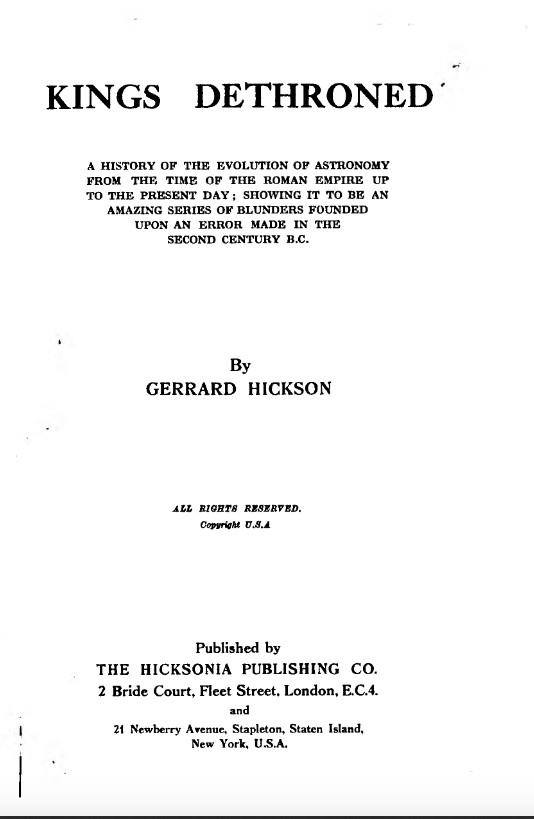
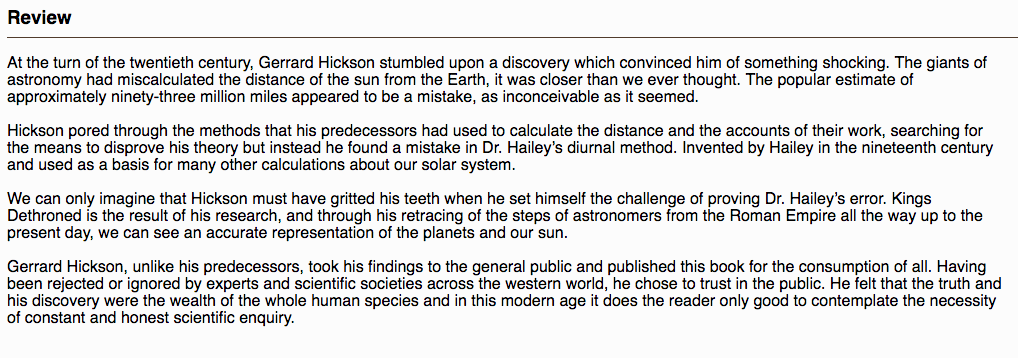
Posted By: Paul - Thu Aug 25, 2022 -
Comments (1)
Category: Eccentrics, Spaceflight, Astronautics, and Astronomy, Books

| Who We Are |
|---|
| Alex Boese Alex is the creator and curator of the Museum of Hoaxes. He's also the author of various weird, non-fiction, science-themed books such as Elephants on Acid and Psychedelic Apes. Paul Di Filippo Paul has been paid to put weird ideas into fictional form for over thirty years, in his career as a noted science fiction writer. He has recently begun blogging on many curious topics with three fellow writers at The Inferior 4+1. Contact Us |




